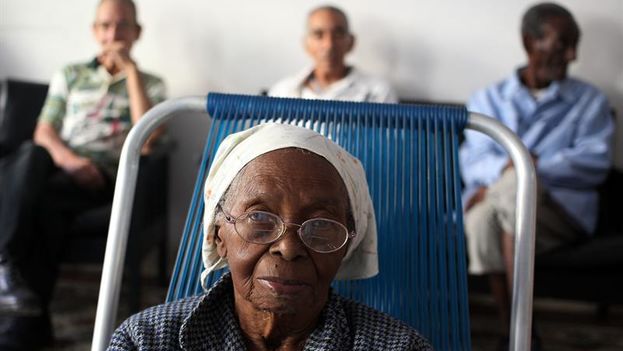
![]() 14ymedio, Mario Penton, Miami, 10 August 2017 – The Cuban population is aging at an inverse ratio to the investment required to support this share of the citizenry. Almost 20% of Cubans are over 60, and a recent government study sees aging as “the nation’s biggest demographic challenge.”
14ymedio, Mario Penton, Miami, 10 August 2017 – The Cuban population is aging at an inverse ratio to the investment required to support this share of the citizenry. Almost 20% of Cubans are over 60, and a recent government study sees aging as “the nation’s biggest demographic challenge.”
Health spending fell from 11% of GDP in 2009 to 8% in 2012, according to data from the Statistical Yearbook of Cuba. The investment in social programs affecting the elderly has been reduced since Raúl Castro initiated timid reforms in the country’s economy.
The economist Carmelo Mesa-Lago has calculated that the number of hospitals in the country has decreased by 32% since 2007, while personnel engaged in public health has fallen by 22%. Despite the steady increase in the number of elderly people in the country, there are only 20,000 places in some 300 grandparents’ homes (for day care) and 144 nursing homes.
According to sociologist Elaine Acosta, there is evidence that a significant share of Cuba’s 2,219,784 people who are over 60 “lack effective opportunities to enjoy a dignified old age.”
In addition, the expert believes that “the difficulty of social policy to anticipate and plan the resolution of problems related to old age only aggravate the crisis of care that faces Cuban society.”
In the face of what could be the end of trade with Venezuela, the aging population of the island, which has seen the purchasing power of its pensions reduced by almost 50% since 1989, is facing an unsustainable pension system in the medium term, Mesa-Lago explains.
The situation is complicated, because Raul Castro’s government eliminated many of the goods and services formerly provided ‘free,’ drastically reducing the items covered by Social Assistance, as well as the number of beneficiaries.
In 2016, 54,968 older adults received social security pensions, some 8,415 fewer than in 2011. This population segment has also been hit in recent years by the elimination of subsidies for several products in the ration book, and the resulting quadrupling of prices.

A study published by Cuba’s National Bureau of Statistics and Information (ONEI), reports that 79% of Cuba’s elderly live in urban areas, while the remaining 21% live in rural areas. Women make up just over half of the island’s aging population, at 53%, with men accounting for 47%.
The phenomenon of aging generally occurs in societies that have achieved a high rate of human development. Among the elements that influence a country’s aging statistics are migration, fertility rate and mortality.
In the case of Cuba, life expectancy was 79.5 years in 2015, one of the highest in the Americas. However, the low level of fertility – 1.6 children per woman, closer to European figures – and a steady migration have contributed to raise the average age of the country, which in 2016 reached 40 years.

The impact of the aging of the population reaches all spheres of society and has repercussions on the economy, because an important segment of society ceases to produce and has to be sustained by an ever smaller population or workers, notable in the Cuban case. Social services face an increase in the demand for services to the elderly and there is also a direct impact on the pension system.
Relative to population, Cuba’s oldest provinces are Villa Clara, Havana and Sancti Spíritus, in which the population over 60 is 23%, 21% and 21% of the population, respectively. The youngest province on the island is Guantanamo, followed closely by Artemis and the Isle of Youth.

In the case of municipalities, the youngest are Yateras and Caimanera, both in Guantanamo province, with only 13% of the population over age 60. Those with the highest proportion of elderly are Havana’s Plaza of the Revolution municipality – the location of the headquarters of Cuba’s octogenarian rulers – where 27% of residents are over 60, followed by Placetas and Unión de Reyes, both with 25% elderly populations.
“According to estimates by the United Nations Population Division, Barbados and Cuba will be the most aged countries in Latin America and the Caribbean in the immediate perspective,” the ONEI reports.
The Economic Commission for Latin America and the Caribbean, which funded part of the study, notes in its research that in 2025, 25% of the Cuban population will be over 60, a figure that will reach 33% of the population by 2050.

